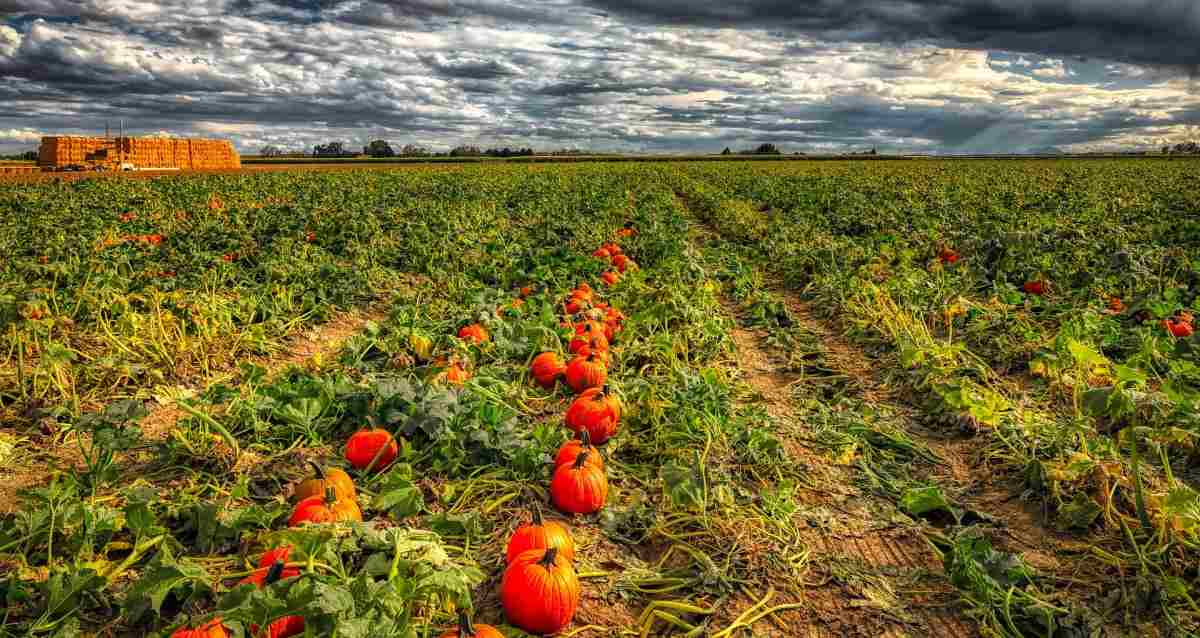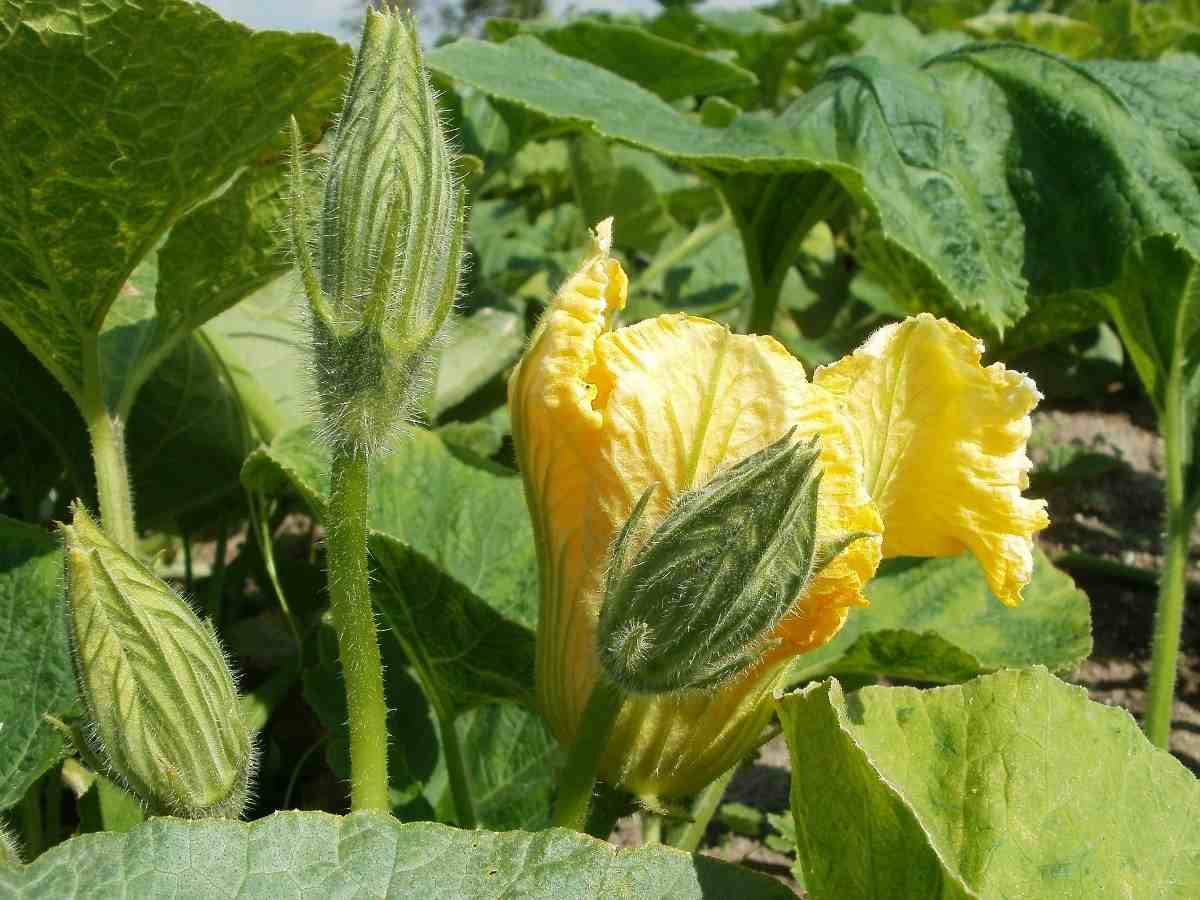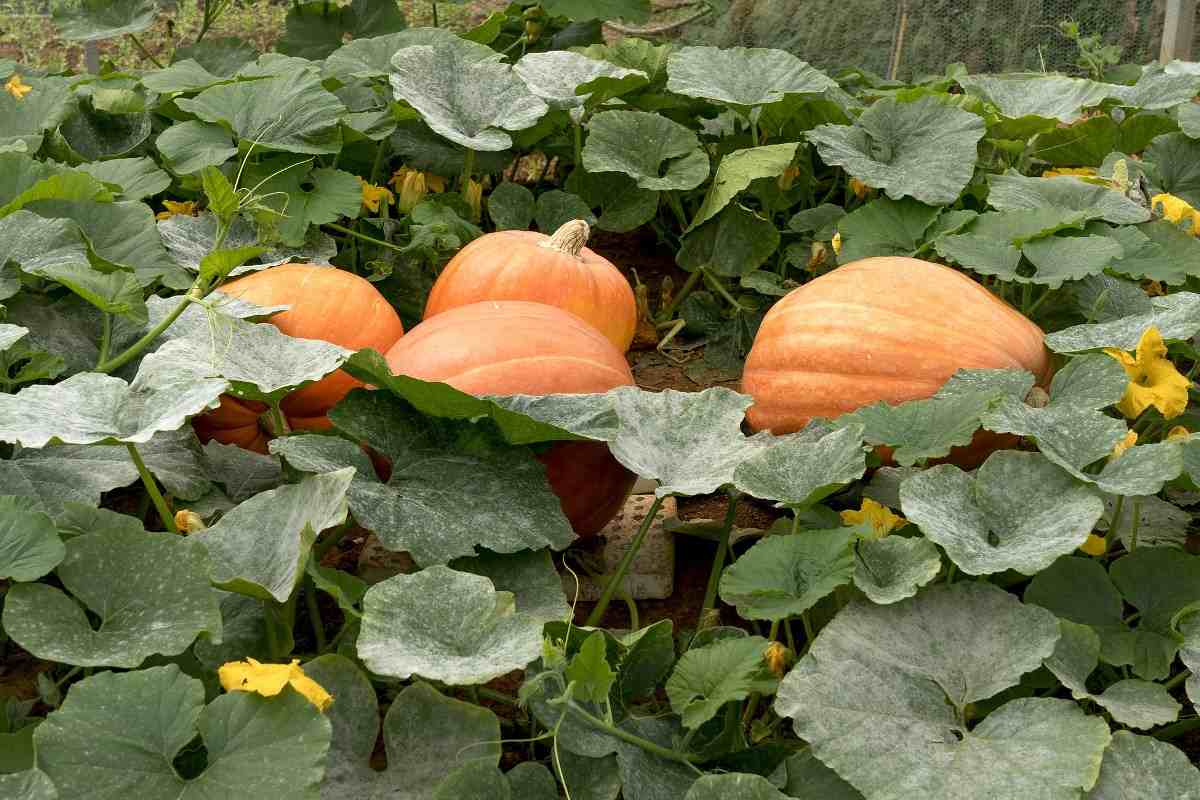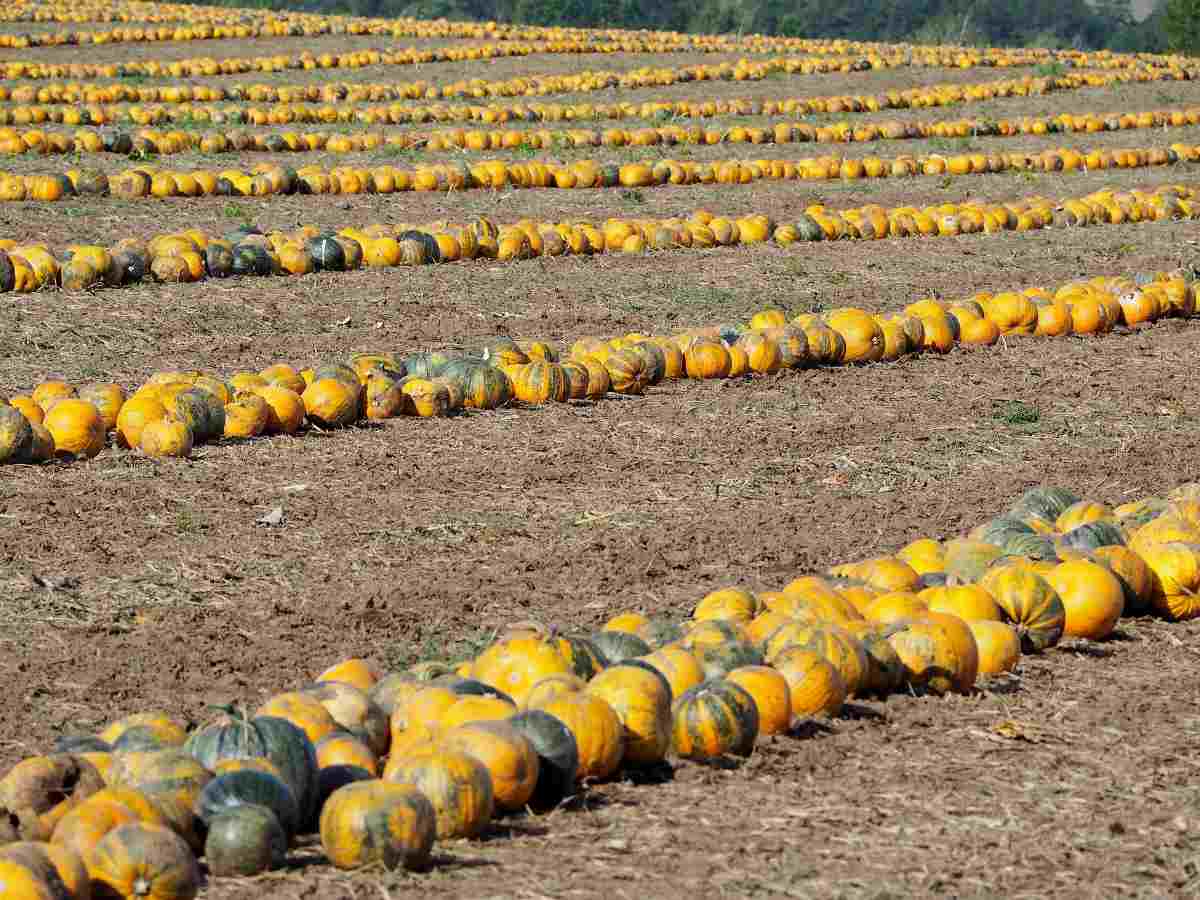Introductio to organic Pumpkin farming
Pumpkins belong to the familygenus Cucurbita, and Cucurbitaceae. Pumpkins are warm-season, frost-sensitive annuals.Pumpkin is a popular vegetable crop in India which is grown in the rainy season. India is the 2nd largest producer of Pumpkin. It is used for cooking purposes and to make sweets. It is a good source of potassium and Vitamin “A”. Pumpkin helps to lowers blood pressure, boost eye vision, and has antioxidant properties. Its leaves, young stems, fruit juice, and flowers have medicinal properties.
A step by step guide to organic Pumpkin farming
Organic farmers rely deeply on crop rotations, legumes, crop residues, green manures, animal manures, composts, and mineral-bearing rock powders to feed the soil and supply plant nutrients. They manage weeds, insects, and other pests with mechanical cultivation and cultural, biological, and bio rational controls. They do not use conventional commercial fertilizers, synthetic growth regulators, or synthetic pesticides. Insect pollination of cucurbits is the norm, but also hand pollination is possible. The following practices can be applied in organic farming.

- Minimize erosion
- Use cover crops
- Practice crop rotation
- Use fertilizers that enhance soil building
- Minimize the number and weight of field operations
- Minimize tillage
- Minimize the use of pesticides. (In organic production, use only approved pesticides, and then only as a last resort, when biological and cultural strategies have failed.)
Soil requirement for organic Pumpkin farming
It needs loamy soil having a good drainage system and is rich in organic matter. Soil pH of 6 to 7 is optimum for organic pumpkin cultivation. Pumpkins are a warm-season crop and need a relatively long, warm growing season. The soil temperature at a 2-inch depth should be at least 15°C for good seed germination. Plants grow best if daily temperatures are between 15 and 27°C. Pumpkin roots are ineffective in cold soils, which can cause plants to permanently wilt. Pumpkins are suitable for a wide variety of well-drained soils. Pumpkins don’t tolerate wet or poorly aerated soils. Huge amounts of soil organic matter and a soil pH of 6.5 to 7.5favor maximum production.
Pumpkin vines will also grow best in locations with lots of good air circulation and sunlight. They thrive in well-draining, nutrient-rich soil. Compost is the best soil amendment for growing organic Pumpkins. If you don’t have your homemade compost, use an organic fertilizer like Pro-Mix Multi-Purpose Organic Garden Fertilizer. Pumpkins require ample water, full sun, and plenty of room to sprawl. Select a site that is protected from cool winds and work in large amounts of garden compost and well-aged chicken manure. The soil should be tilled deep and over a large area – roots and vines can wander for 15 feet or more in any direction. Old compost piles make great patches.
Crop nutrition for Pumpkins
In case if you miss this: Male and Female Flowers in Plants.

Achieving good yields of a quality product will depend on achieving a balance of soil elements, a biologically active soil, and good organic matter. Pumpkins will tolerate slightly acid conditions but prefer soils that are rich in organic matter. Compost applications of around 10 tonnes/ha are usually incorporated with green manure before cropping. A soil test should be carried out following green manure incorporation and previous to planting to determine the crop requirements. Pumpkins are relatively heavy nitrogen feeders and since N in compost is slowly available, an additional application of a commercial organic fertilizer may be essential at planting. Foliar applications or fertigation (applied through a micro-drip irrigation system) with approved organic products can be used to correct temporary nutritional deficiencies. A foliar application of fish emulsion, seaweed, or garlic extract may also help to resist certain pests.
Spacing of Pumpkin seeds
Sow two seeds per hill and use a spacing of around 60 cm. For hybrid varieties, sow seeds on both sides of the bed and use a spacing of around 45 cm.
Seed rate in organic Pumpkin farming
Seed rate of1kg seed is sufficient for one-acrePumpkin production.
Seed germination process of Pumpkins
The first step to growing a bumper crop of organic Pumpkins is to make sure that you are planting high-quality seeds that have been purchased from a reliable seed provider. Because Pumpkin seeds can still germinate when they are 6 years old, your seed packet should be able to last you a while. After 5 days of being planted in full sun, your seeds should start to sprout.
Planting procedure in the organic Pumpkin farming
Pumpkins are easy to grow from seeds. They can either be grown as seedlings indoors or grown directly from seeds placed in the garden. Pumpkin roots aren’t the easiest to transplant, so if they are grown as seedlings indoors, most gardeners choose to use soil blocks or compostable pots rather than plastic pots. Using soil blocks or compostable pots means that the whole seedling pack, pot and all, can be planted in the garden to minimize transplant.
Vining habit and fruit size of each variety should determine the distance between plants and rows. Row spacing varies from around 5 to 12 feet for large-fruited vining varieties, with 2 to 6 feet between plants. Bush varieties are planted in rows around 3 to 6 feet apart, with plants 1 to 3 feet apart within the row. Seeds should be planted about 1 to 2 inches deep, preferably in moist soil. Seeds planted in dry soil and left unirrigated for any length of time are subject to attack by rodents. Growers occasionally plant in hills (2 to 3 seeds/hill) and then to a stand. Plants are thinned after they have 2 or 3 true leaves. To avoid disturbing roots of plants that remain in the hills, cut excess plants off at the soil surface; do not pull them.
You should not miss this: Commercial Raised Bed Farming.

Pumpkin seeds like warm weather. It can be tempting to plant Pumpkins on the first frost-free day to maximize growing days (and Pumpkin size), but the Pumpkin plants won’t be happy with cool overnight temperatures. Wait until danger of frost has passed and the ground outside has warmed with the springtime weather. Daytime temperatures should be higher than 16°C for good germination of the Pumpkin seeds.
Watering and mulching requirements in organic Pumpkin farming
One of the best ways to ensure success for Pumpkin crop is to feed it large amounts of compost and manure. Mixing a few scoops of compost into the top inches of soil that are mounded around your plants is ideal. Alfalfa meal, fishbone meal, kelp meal, and kitchen compost are all great soil additives for Pumpkins. To keep the weeds down, black plastic or thick straw mulch can be an effective barrier, exclusively since Pumpkin plants have shallow roots that can be damaged by too much hand weeding or hoeing.
Pumpkins need between one and two inches of water every week, so be sure to irrigate your crop when the weather isn’t cooperating. Drip irrigation systems are preferred to overhead sprinklers, but if they are your only option be sure to use it only early in the day to reduce the risk of creating a habitat for fungi.
Organic pests and diseases control in Pumpkin farming
Common insect pests that attack Pumpkin include cucumber beetles, squash vine borers and squash bugs. Apply organic pesticides to establish control. Remove crop debris and rototill the garden after harvest to prevent future problems.
Bacterial wilt (spread by cucumber beetles), powdery mildew, downy mildew, and anthracnose are common plant diseases. Choose a site with good air circulation to prevent many fungal problems and apply organic fungicides (copper, sulfur) early, when symptoms first appear.
Cucumber Beetles – As a notorious garden pest, cucumber beetles can be recognized by their greenish-yellow coloring and three black stripes across their back. These beetles love to munch on squash vines and can spread bacteria or even fungal infections to them. To keep cucumber beetles from laying eggs on your plants, use row cover on your plants before they flower. If the problem gets out of hand you can use an organic spray to contain them.
Squash Vine Borer – Typically appearing when vines begin to spread throughout your garden, squash vine borers can quickly decimate a crop. The first sign that you have an infestation will be buzzing orange moths. Using row cover for several weeks can effectively stave off an invasion, as can cutting off any plant vines that have already been chewed on.
Aphids – As a tiny bug that can be seen on the bottom of your Pumpkin leaves, aphids slowly drain the juices from your plants and leave them yellow and lifeless. The best natural solution for fighting aphids is to introduce ladybugs to your yard. These natural predators will feast on your garden pest and rapidly get the population back in check.
Squash Bugs – Similar to squash borers, squash bugs like to suck the sap out of your Pumpkin plant leaves, leaving them to die. A healthy garden should be able to fend off a squash bug invasion, but if you see the bugs or eggs on the underside of your plant leaves, be sure to squash them.
Blossom End Rot – This common garden disease causes your fruit to form a black rotten spot on the end where the flower once was. The main causes are hot weather and lack of water, so keeping your garden hydrated should help stave off the problem.
Downy Mildew – As a fungal leaf disease, downy mildew shows up as yellow patches on your squash leaves that turn tan or grey before shriveling up. The best way to prevent it is to simply grow resistant varieties and prevent infected plants from touching healthy ones.
Powdery Mildew – Similar in function to downy mildew, powdery mildew looks completely different and is a whitish powder that forms along the stems and leaves. Caused by humidity, infected leaves, and plants usually die quickly. Keep infected plants out of contact with healthy ones to prevent the mildew from spreading. Powdery mildew can become a problem with squash vines such as Pumpkins. Mildew generally develops in moist, humid environments with low air circulation. Mildew can be minimized by spacing plants apart in an area with air circulation, as well as avoiding overhead watering. Use drip lines to irrigate your vines if possible. If powdery mildew does develop, it will look like the leaves have white powder all over them. Spray the leaves with a mixture of dissolved baking soda and liquid soap or with milk (dairy) to counteract the mildew. Destroy infected plants at the end of the season and consider rotating next year’s Pumpkin crop to a new location.
Pesticide Sprays
Pumpkins are attractive to a host of common pests. Among the most common are sucking insects such as squash bugs and aphids, which you can control with sprays of insecticidal soap or neem oil. Beetles, such as the western striped cucumber beetle, destroy both the flowers and the roots. Use a pesticide spray having carbaryl for control of this pest. Armyworms and loopers eat the Pumpkin vine’s leaves. Control these two pests with the biological pesticide Bacillus thuringiensis sprayed on the Pumpkins and foliage.
Fungicide Sprays
Downy mildew is a fungal disease in Pumpkins caused by Pseudoperonospora cubensis. Initial symptoms contain yellow lesions on the Pumpkin vine’s foliage. Treat downy mildew directly as it easily spreads to other plants. Use a fungicide spray having chlorothalonil or maneb and ensure that it thoroughly covers all parts of the Pumpkin plant and fruit.
Harvesting organic Pumpkins

Harvesting is mainly done when the skin of the fruits turns pale brown and the inner flesh becomes golden yellow. Mature fruits having good storage capacity so they can be used for long-distance transportation. Harvesting of immature Pumpkinfruits is also done for sale purposes. The best time to harvest organic Pumpkins is when the skin is tough enough that your fingernail cannot easily poke through it. Since Pumpkins don’t change color much after harvesting, it’s good to wait until the Pumpkins are the desired color before harvesting. It’s also easy to harvest Pumpkins after the frost has extinguished the leaves (this makes the Pumpkins easy to spot! Don’t wait until truly freezing weather to harvest the Pumpkins though, as they will start to decompose.
Use gloves when harvesting Pumpkins as the vines have abrasive hairs on them which can irritate the skin. Small Pumpkins can be cut from the vine with garden scissors or pruners. Large Pumpkins may require a sharp utility knife or garden saw. Leave several inches of stem attached (and hopefully a few cute tendrils if possible). Really big Pumpkins may be difficult to lift and should be carried cautiously (or even picked up with machinery like a tractor).
In case if you are interested in this: Vegetable Plant Spacing.
Where can get organic pesticides